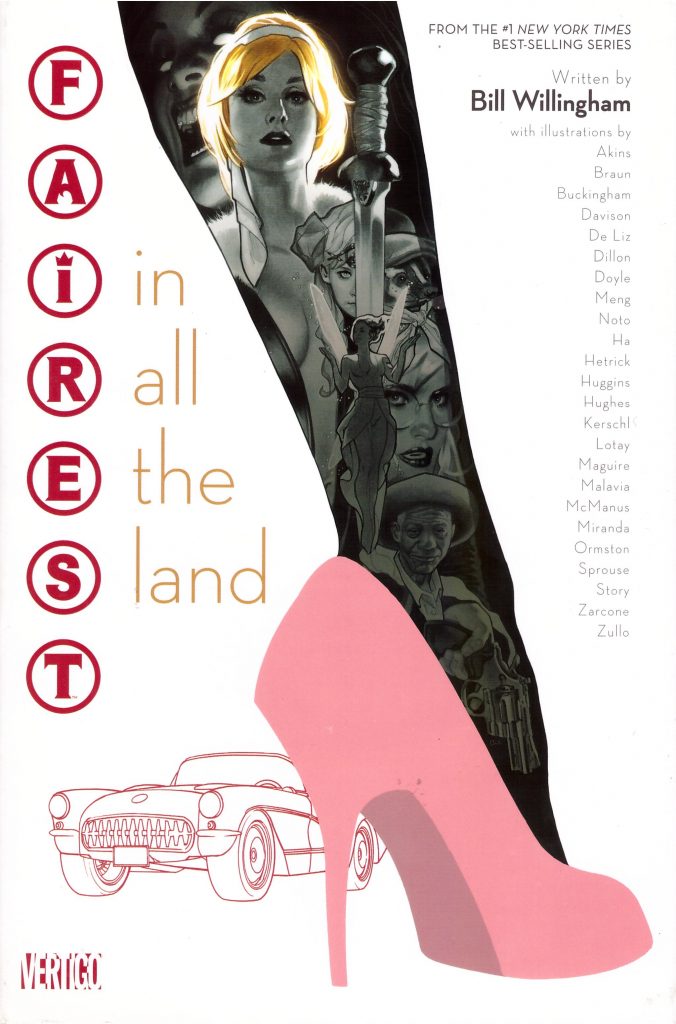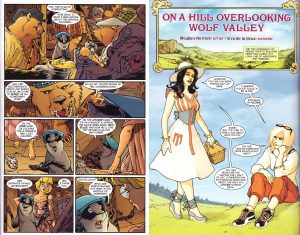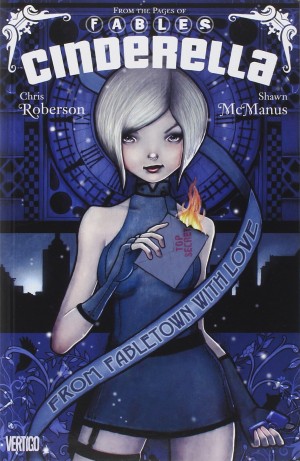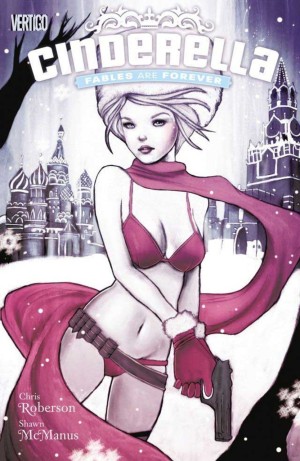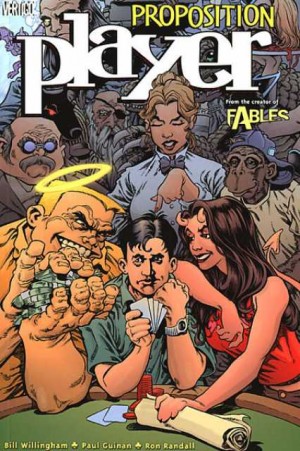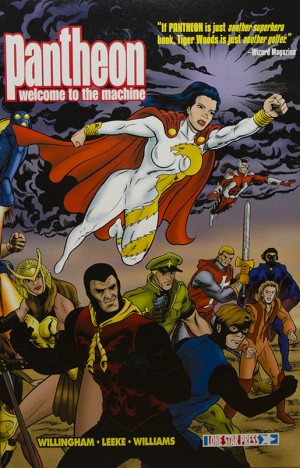Review by Ian Keogh
Although tied in with the Fairest series spun off from Fables, In All the Land has more in common with Bill Willingham’s earlier stories recasting Cinderella as the all-purpose action agent on behalf of the Fables community. The subtitle of Thirty Tales of Seven Terrible Days more accurately represents the content, which is a multitude of brief stories by assorted artists all connected to a central mission.
An opening text piece with illustrations by Chrissie Zullo sets the tone, being the narration of the magic mirror, yes, that magic mirror, from a lost magical location, attempting to work out how car tracks appeared there while it was out of action. The mirror continues to provide the narrative captions throughout the book, the car is an evil fairy transformed into a 1950s Corvette able to travel anywhere, and Cinderella is driving it around attempting to unveil a killer. There’s been a pair of murders in Fabletown, and the single clue is a list of women who could each claim to be the fairest in the land. More pairs of murders follow, and Cinderella is limited by the car having to follow her commands, but able to avoid the intent if the instruction isn’t absolutely precise.
The art is a mixed bag, with some stunning pages and some ordinary, but very few poor. An interesting choice was to use a number of artists more known for illustrations than comics, and talented new artists, several of whom have progressed to remarkable things (Ming Doyle). Old favourites such as Kevin Maguire, Chris Sprouse and Adam Hughes also feature, and of course Steve McManus drew the previous Cinderella stories. The downside of a such an artistic selection is sometimes jarring transitions between artists, such as from Dean Ormston’s stylised realism to the same character featured in the cartooning of Tony Akins (sample art left), Meghan Hetrick (sample art right) to Russ Braun, or Fiona Meng to Mark Buckingham.
Given the subtitle there can be no expectation other than an episodic story, and Willingham’s snippets are clever, almost every one building very slightly on what’s known or revealing a conversation or event from the past. The magic mirror is key, able to observe anything at any time unless specifically instructed otherwise via a spell, and Willingham uses this to take the investigation into some unpredictably strange areas, such as a look at a 1960s all-girl band. He’s unable to generate an effective disbelief as characters killed early are central to Fables, and the get out clause is revealed by the halfway point, but this is a story with consequences for the Fables world. Willingham ends with an epilogue text and illustration chapter, and it contains a fine final twist. In All the Land is a lot of fun, if not matching Fables at its peak, and was a resounding success.
